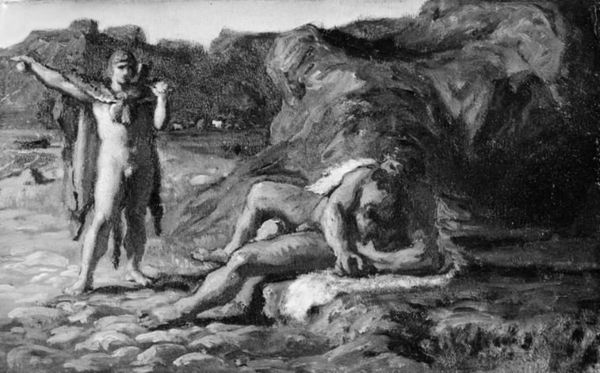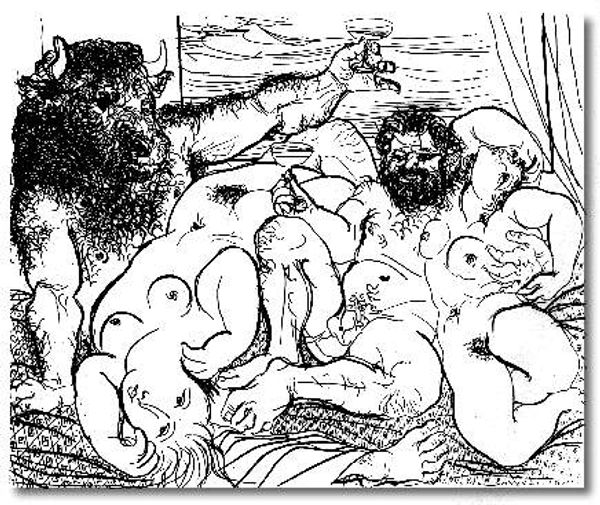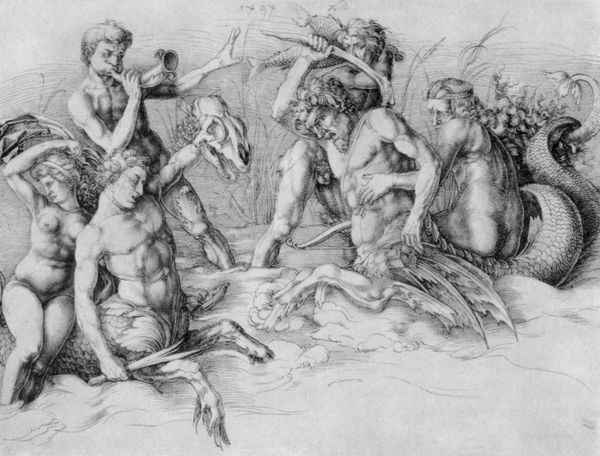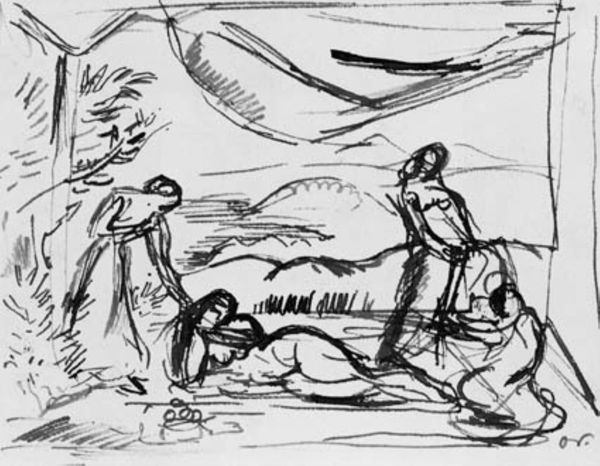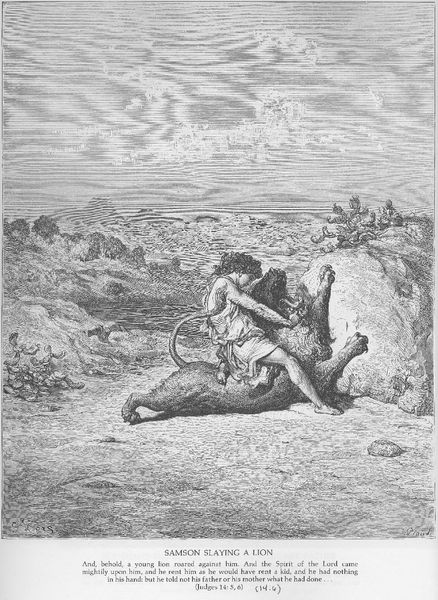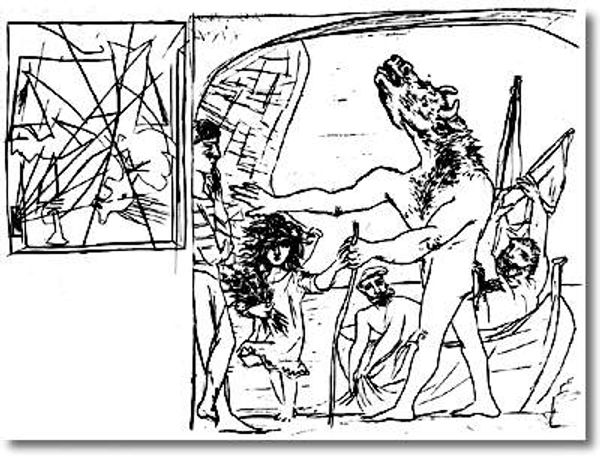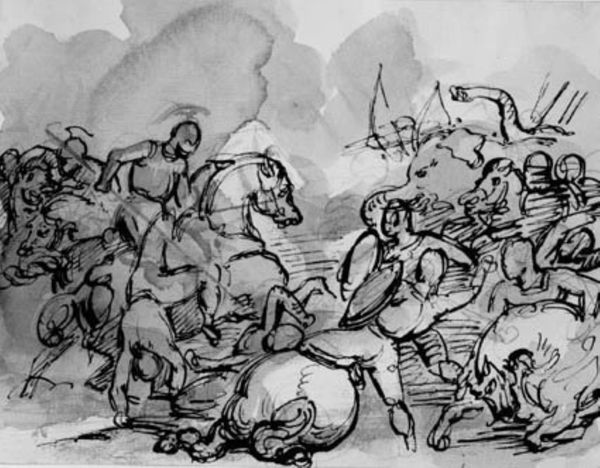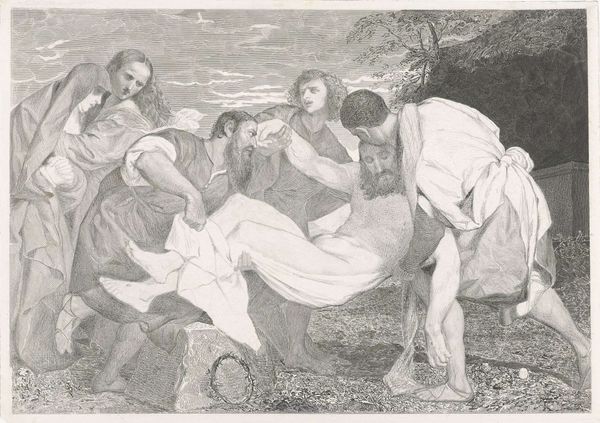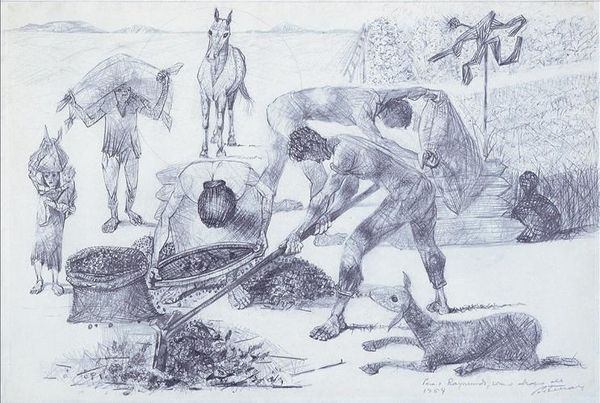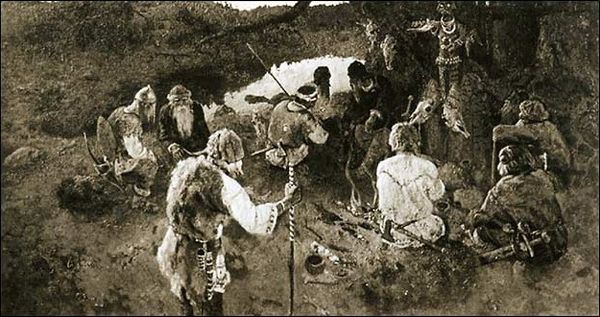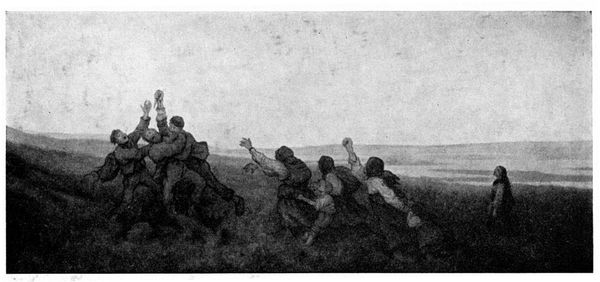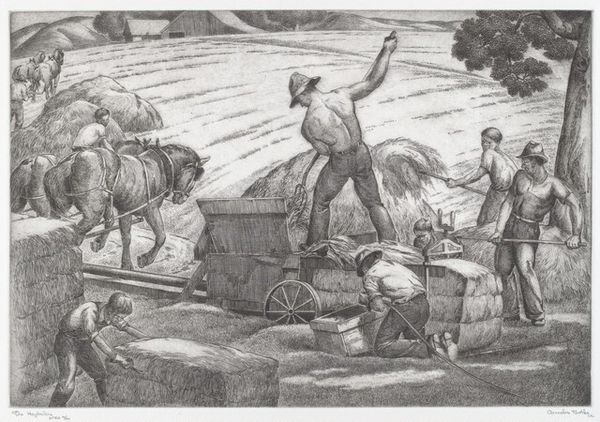
drawing, ink, charcoal
#
drawing
#
narrative-art
#
landscape
#
charcoal drawing
#
figuration
#
charcoal art
#
ink
#
romanticism
#
orientalism
#
charcoal
#
academic-art
#
nude
Copyright: Public domain
Curator: Let's turn our attention to "Atlas' Daughters," a drawing rendered in charcoal and ink. The artist is Paul Leroy. Editor: My initial response is a sense of classical tension. There's a blend of delicate lines with almost urgent, aggressive poses. I also notice a lack of background details, which somehow throws off its narrative composition. Curator: Exactly. Consider the orientalist lens. These women, presumably figures from classical mythology, are reimagined, arguably exoticized within the bounds of 19th century European aesthetics. Their activity contrasts starkly with traditional expectations of female behavior within their era. How can this intersection between myth and gender norms provide us with fresh insights? Editor: It’s compelling to consider how dogs act as signifiers of status and companionship, especially for women in art. More importantly, there are several depictions of archery in diverse cultures as emblems of war or a form of protection. The image blends classical, sometimes Western symbolism with artistic appropriation, a complicated space. Curator: I agree. Paul Leroy is known to draw heavily from themes around identity, and race is inevitably woven into his work. The image certainly makes one wonder whether these “daughters” of Atlas are liberated hunters, subjugated representations or a commentary on European imperial power and it's connection to colonialism. Editor: Zooming out a bit, Atlas’ myth revolves around endurance and the cosmos. In the drawing, we have his "daughters". The name, along with the archers poised to strike, suggests skill, precision, maybe danger too, right? It may also indicate power through feminine divinity. Curator: Yes, and if we draw parallels between women as sustainers—like Atlas holding the heavens—we may reconsider notions about feminine strength versus societal expectation, which historically, limits that power through patriarchy. Editor: It's truly fascinating to consider that interplay and how an artwork on the surface, romantic and straightforward, engages themes around race and gender, or simply reveals the artist’s point of view. Curator: Indeed. I think by situating the piece within its time and understanding orientalism, as well as intersectional politics, the work encourages crucial conversations.
Comments
No comments
Be the first to comment and join the conversation on the ultimate creative platform.
